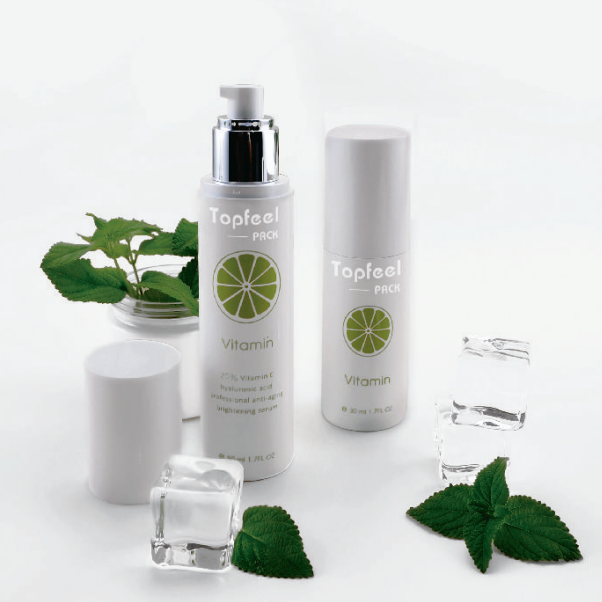Пакувањето игра клучна улога во брендирањето и презентацијата на производот, а две популарни техники што се користат за подобрување на визуелната привлечност на пакувањето се печатење со ситопечат и топло печатење. Овие техники нудат уникатни придобивки и можат да го подобрат целокупниот изглед и чувство на пакувањето, правејќи го попривлечно и попривлечно за потрошувачите.
Печатењето со свила, познато и како ситопечат, е разновиден и широко користен метод за нанесување уметнички дела или дизајни на различни материјали, вклучително и пакување. Вклучува пренесување на мастило преку сито на посакуваната површина за да се создаде живописен и издржлив отпечаток.

Печатењето со свила нуди неколку предности во однос на другите методи на печатење, што го прави популарен избор за пакување. Една од главните придобивки од печатењето со свила е неговата способност да постигне живописни и непроѕирни бои. Мастилото што се користи во печатењето со свила е генерално погусто и попигментирано во споредба со другите методи на печатење, овозможувајќи смели и живописни бои што се истакнуваат на пакувањето. Ова е особено корисно кога се работи со потемни или обоени материјали за пакување, бидејќи непроѕирните мастила обезбедуваат дизајнот да остане видлив и живописен. Печатењето со свила, исто така, обезбедува одлична точност на боите, осигурувајќи дека печатениот дизајн прецизно се совпаѓа со посакуваните бои. Ова е особено важно за брендовите кои имаат специфични шеми на бои и сакаат да одржат конзистентност низ целото нивно пакување.
Со ситопечатот, брендовите имаат поголема контрола врз репродукцијата на боите, што им овозможува да ги постигнат точните нијанси што ги замислуваат за нивната амбалажа. Понатаму, ситопечатот нуди одлична издржливост и отпорност на абење. Мастилото што се користи во овој метод на печатење обично се стврднува со топлина, што резултира со робусна адхезија на површината на пакувањето. Ова го прави ситопечатот идеален за амбалажа што подлежи на често ракување, транспорт и складирање без да се загрози квалитетот и изгледот на печатениот дизајн.
Покрај ситопечатот, друга техника што најчесто се користи во пакувањето е топлото печатење. Топлото печатење вклучува нанесување метална или обоена фолија на површината на пакувањето со употреба на топлина и притисок. Оваа техника создава визуелно впечатлив и луксузен ефект, правејќи ја амбалажата да се истакнува на полиците. Топлото печатење нуди широк спектар на опции во однос на боите и завршните обработки на фолијата, дозволувајќи им на брендовите да создадат уникатни и впечатливи дизајни на амбалажата. Металните фолии, како што се златни или сребрени, зрачат со чувство на луксуз и софистицираност, додека обоените фолии може да се користат за да се совпаднат со шемата на бои на брендот или да создадат специфичен визуелен ефект. Дополнително, на фолијата може да се нанесат различни завршни обработки, како што се сјајни или мат, што овозможува уште повеќе опции за прилагодување на амбалажата. Една од клучните предности на топлото печатење е нејзината способност да создаде тактилен и текстуриран ефект на амбалажата. Комбинацијата на топлина и притисок ја пренесува фолијата на амбалажата, што резултира со издигнат, релјефен или вдлабнат ефект. Ова додава длабочина и димензија на дизајнот на амбалажата, подобрувајќи ја неговата визуелна привлечност и создавајќи незаборавно сензорно искуство за потрошувачите.


Друга предност на топлото печатење е неговата издржливост и отпорност на избледување или гребење. Фолијата што се користи при топлото печатење е дизајнирана да издржи секојдневно абење, осигурувајќи дека пакувањето го задржува својот луксузен и беспрекорен изглед, дури и по долготрајна употреба. Оваа издржливост го прави топлото печатење одличен избор за пакување кое бара долготрајност и треба да го зачува имиџот на брендот. И ситопечатот и топлото печатење нудат огромни можности за дизајн на пакување, а комбинацијата на овие техники може да резултира со визуелно зачудувачко и премиум пакување.
Брендовите можат да користат ситопечат за живи и непроѕирни бои, а воедно да вклучат и топло печатење за да додадат метални акценти, текстури и допир на луксуз. Од суштинско значење е да се земат предвид материјалот за пакување и дизајнот при избор помеѓу ситопечат и топло печатење. Ситопечатот е погоден за рамни или малку закривени површини, што го прави разновидна опција за пакување во кутии или етикети. Од друга страна, топлото печатење најдобро функционира на цврсти материјали како што се кутии или контејнери, обезбедувајќи беспрекорна и визуелно привлечна завршница. Како заклучок, и ситопечатот и техниките на топло печатење нудат уникатни придобивки за дизајнот на пакувањето. Ситопечатот обезбедува живи и непроѕирни бои, одлична точност на бојата и издржливост, што го прави идеален избор за смело и долготрајно пакување. Топлото печатење, од друга страна, создава луксузен и визуелно впечатлив ефект со метални фолии, текстури и релјефни или врежани детали. Со користење на овие техники, брендовите можат да го подобрат своето пакување, да го привлечат вниманието на клиентите и да остават траен впечаток.
Време на објавување: 08.11.2023

